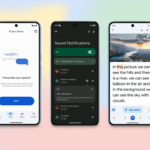What was the very last thing you searched on Google? For me, it was “finest snowskin mooncake in Singapore” — a traditional deal with to have fun the Mid-Autumn Competition that’s approaching this weekend. It doesn’t matter what you are trying to find, our objective since Google Search launched 25 years in the past has remained the identical: to ship the highest-quality info to everybody.
And all these years later, as our CEO Sundar Pichai has mentioned: it is nonetheless our greatest moonshot, with a lot extra to do. 15% of searches we see on daily basis are ones we’ve by no means seen earlier than — which means we now have to continually enhance Search to verify we’re staying related with what persons are asking. We make hundreds of enhancements to Search yearly, and significantly with developments in AI, we’re persevering with to reimagine what Search may be.
As we have fun our twenty fifth birthday this week, right here’s a fast look again at moments alongside the journey we’ve taken to make Search extra useful for individuals throughout Asia Pacific.
Search in your language
Again in 1998, Google began as an English-only service. From the beginning, we knew that serving to individuals all world wide meant we would wish to develop it to their languages. So inside two years, we had been working in 14 languages together with Japanese, Korean, and Simplified and Conventional Chinese language. With this growth, extra individuals may seek for content material of their most well-liked language. In truth, simply including these 4 Asian languages made Search obtainable for 75 million web pages in Asian languages for web customers world wide.
However that was just the start of our journey in Asia Pacific. After we opened our first workplace outdoors the US in Tokyo in 2001, we knew it will turn into a base to get to know the area higher — and for us to enhance our merchandise for the individuals of Asia Pacific. And as we continued so as to add languages to Search (40+ Asian languages and counting), we noticed a chance to develop on the outcomes as nicely. Whereas info in English is extensively obtainable on-line, in different languages it may be troublesome to search out. Due to advances in neural machine studying translation, in 2017 we launched a characteristic in India to assist individuals entry internet pages initially written in different languages and skim it of their most well-liked language.
New methods to look
Textual content search is the place we started, however over time we have continued to create extra intuitive methods to assist individuals discover info. For instance, many individuals discover it simpler to talk their ideas than to put in writing them out — and advances in machine studying allowed us to launch Voice Search in 2008. That is significantly fashionable in India, the place the share of Indians utilizing voice search queries every day is sort of twice the worldwide common.
And moderately than studying, some individuals discover it simpler to hearken to info — main us to introduce the power to pay attention to look outcomes. We first introduced this characteristic to India in 2021, so individuals may hear info in Hinglish and 5 Indian languages. In the present day, you’ll be able to even search what you see along with your digital camera, and only in the near past we launched a Search experiment in Japan and India that makes use of the power of generative AI to assist individuals perceive and discover subjects. After we launched Bard, our conversational generative AI experiment, Korean and Japanese had been the primary non-English languages we expanded it to.









